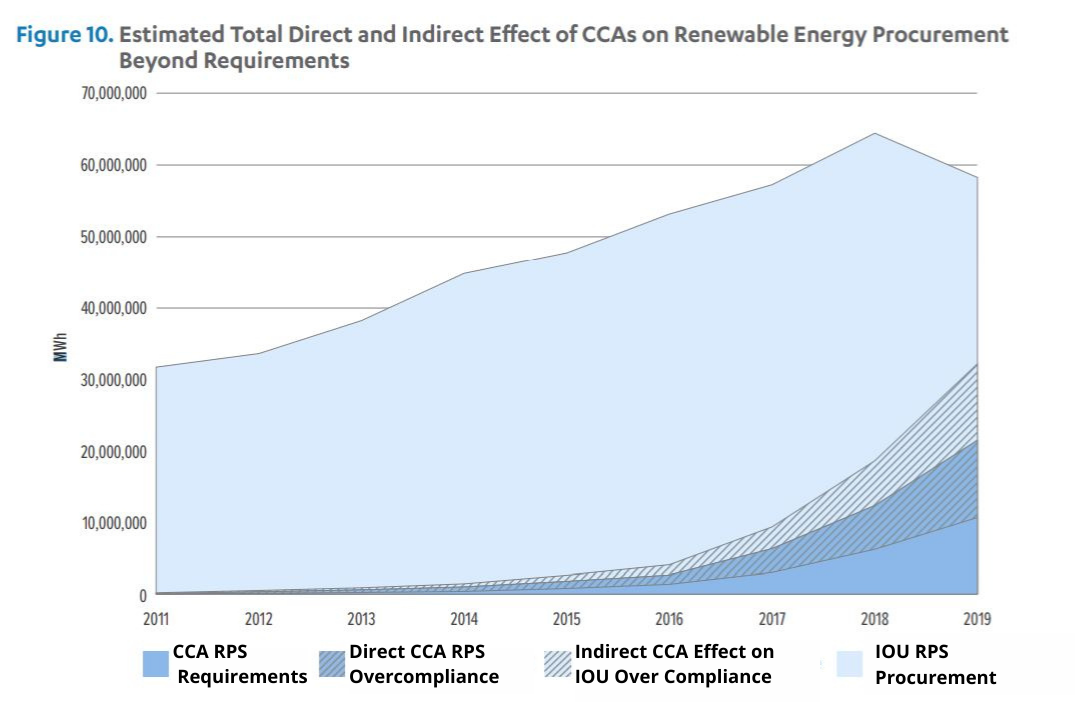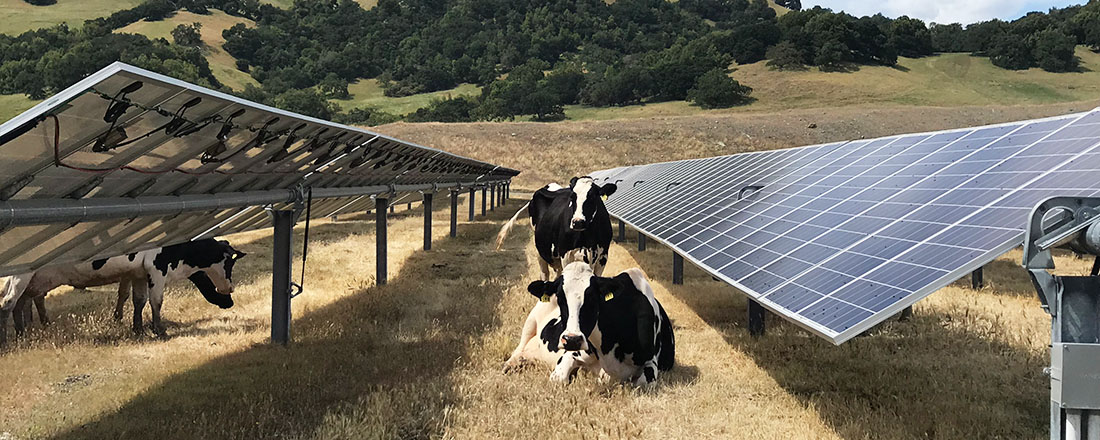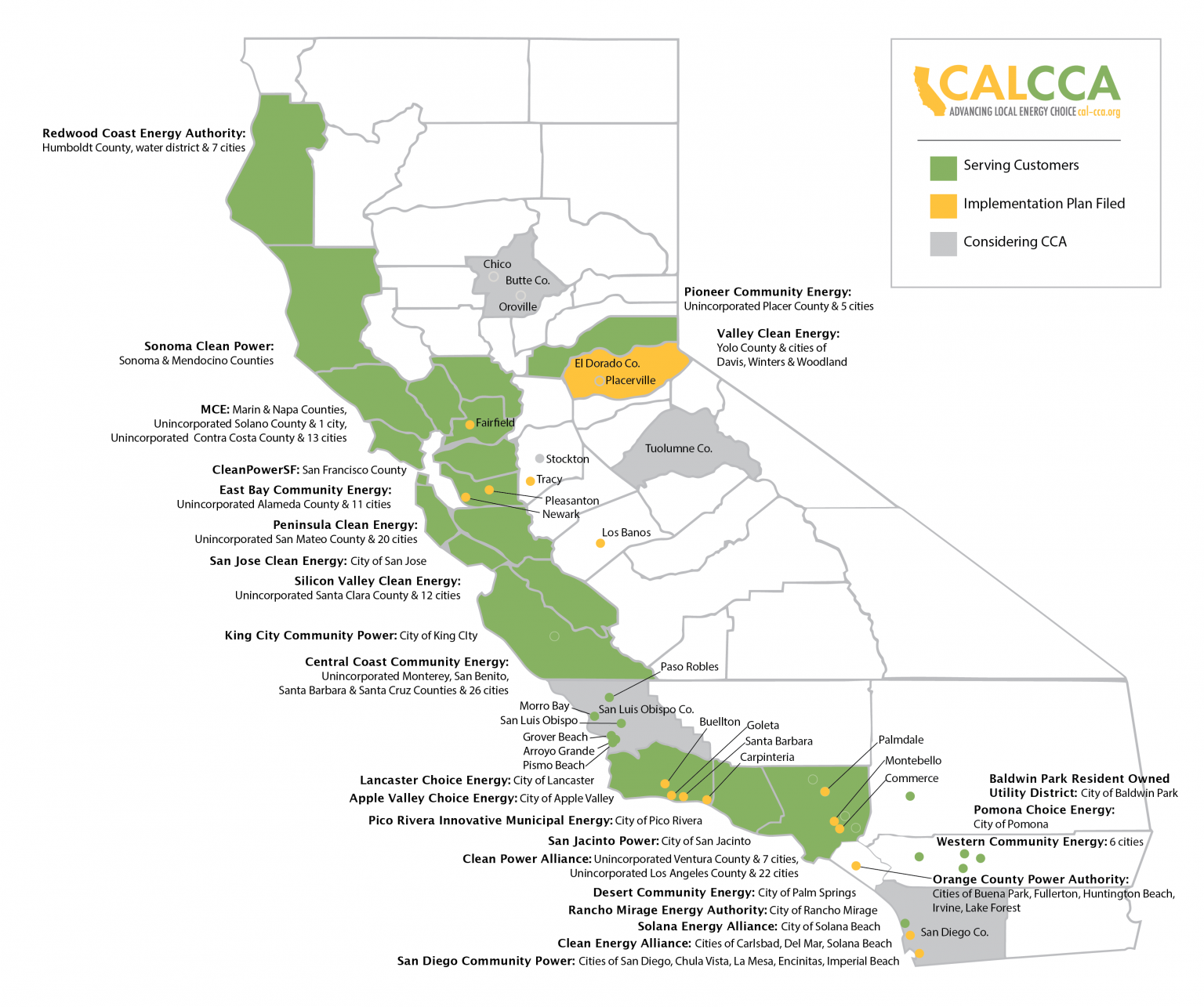MCE is excited to be a part of the recent report on Community Choice Aggregators (CCAs) by the UCLA Luskin Center for Innovation. The report analyzes the role of CCAs in creating the clean energy future. Here are the key findings:
- CCAs can be effective tools for supporting goals for carbon-free energy because they give communities control over their electricity decisions.
- CCAs support innovative local energy programs that increase environmental and economic benefits in their communities.
- CCAs are most effective at supporting environmental goals in communities where the demand for carbon-free energy exceeds what is currently provided.
- CCAs must first be successful as a business to sustain the provision of environmental benefits to customers.
- State policy and regulation play a critical role in the success of CCAs.
- When adopting CCAs to support environmental goals, CCAs in other states should consider local demand for carbon-free energy, designs that enable financial success, and the policy and regulatory context.
Let’s take a deeper dive into the findings of the report and look at the impact of CCAs on the California energy landscape.
CCA Growth
CCAs have seen massive growth in California over the past 10 years. The percent of Californians who have a CCA option has grown from just 1% in 2010 up to 30% today. Across California, 128 cities are CCA members, and up to 6.2 million residents have a default electricity product that is over 90% carbon free.
Support of Environmental Goals
CCAs have played an essential role in advancing California toward its renewable energy targets years ahead of schedule. In 2019, CCAs had an average of 50% renewable and 80% carbon-free energy, whereas investor-owned utilities (IOUs), such as PG&E, San Diego Gas & Electric, and Southern California Edison, had an average of 33% renewable energy and 64% carbon-free energy. From 2011 to 2019, CCAs purchased 23.5 million more megawatt-hours of renewable energy than what the state required, or over twice as much.
The report notes that CCAs support environmental goals not only through direct procurement of clean energy, but also through indirectly increasing the renewable content of energy provided by IOUs.
“Incumbent IOUs have been left with long-term renewable energy contracts procured on behalf of customers that have since departed for CCAs. This means that they have more renewable energy than required for fewer customers.”
CCAs’ combined direct and indirect contribution totals 46 million megawatt-hours of additional clean energy, driving California toward renewable policies faster than ever.

(Graphic: UCLA Luskin Center for Innovation)
As part of their energy procurement, CCAs can also invest directly into local renewable energy projects. Those investments advance California’s energy goals and are an effective way to support local jobs. MCE alone has created more than 5,000 jobs and 1.5 million labor hours through renewable energy projects and energy programs.
Local Reinvestment Programs
In addition to increasing renewable energy content, CCAs also provide value to the local community by reinvesting net revenues into local programs. These programs include rooftop solar and battery energy storage incentives, electrification, energy efficiency incentives, electric vehicle rebates, and education; and provide both financial and environmental benefits to local communities.
“Given CCAs’ local nature, they are well positioned to provide programs that reflect the unique preferences and needs of their communities. For example, MCE has a Low-Income Families & Tenants (LIFT) Program that provides energy and water efficiency assessments and rebates to low-income renters and owners of multifamily housing.”
As local actors, CCAs are also able to use their programs to respond to natural disasters and crises. For example, as part of the response to Northern California wildfires, MCE created Rebuild Napa to promote energy efficient technologies and renewable energy when rebuilding homes destroyed by wildfires.
Cost Advantage
Although CCAs are smaller than the typical IOU, CCAs can provide cleaner electricity at a lower rate because the price of renewable energy has dropped rapidly over the past few decades. Thus, CCAs can open new power-purchasing contracts at a lower price. Another way that CCAs remain competitive is by investing revenues in rate stabilization funds. MCE has saved customers $68 million over our first 10 years in operation.
CCAs also have more flexibility to innovate while setting their rates. MCE’s Local Sol rate allows customers to directly support the development of solar projects in the community. CCAs such as Clean Power Alliance have developed rates to offer low-income customers 100% renewable energy at the same price that they were paying for electricity through the IOU.
The Future of CCAs
CCAs in California have demonstrated that giving communities control over their energy can rapidly advance environmental goals. CCAs also bring benefits to communities through tailored reinvestment programs and offerings. The California CCA model is an important example as other states look for options to move into renewable energy.
“The success of CCAs in California demonstrates the power of promoting carbon-free energy at the grass roots, enabled by public, local choice in electricity supply. Given widespread and increasing support for carbon-free energy, CCAs have great potential to accelerate the adoption of carbon-free electricity across the country.”
CCAs remain important drivers in reaching renewable energy procurement goals ahead of schedule and in ensuring that local community preferences are heard during the transition.
MCE would like to thank the UCLA Luskin Center for Innovation and the authors of the 2020 report (Kelly Trumbull, Julien Gattaciecca, and J.R. DeShazo) for showing how community choice is a movement worth joining. For more information, read the full report, “The Role of Community Choice Aggregators in Advancing Clean Energy Transitions: Lessons from California“.







